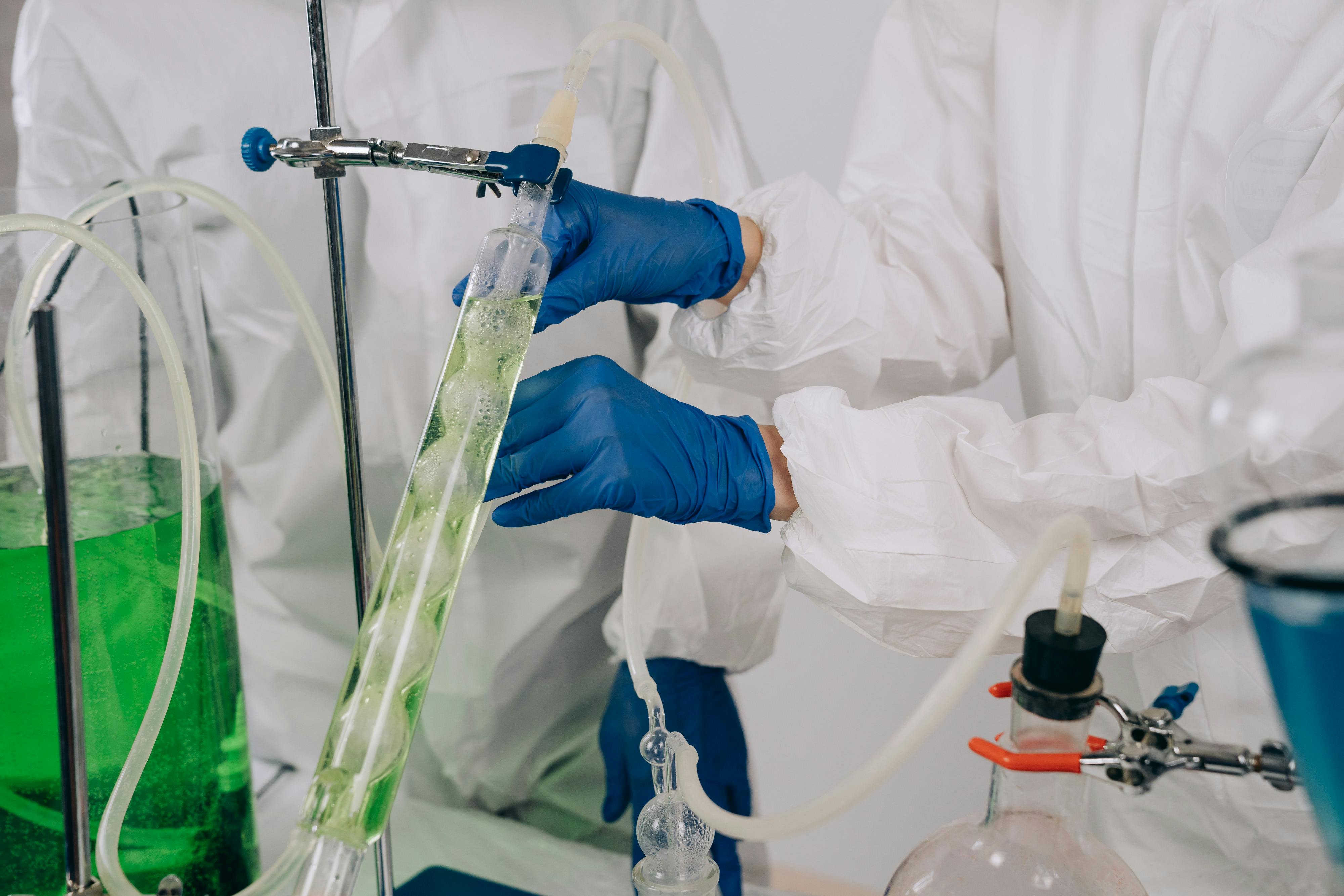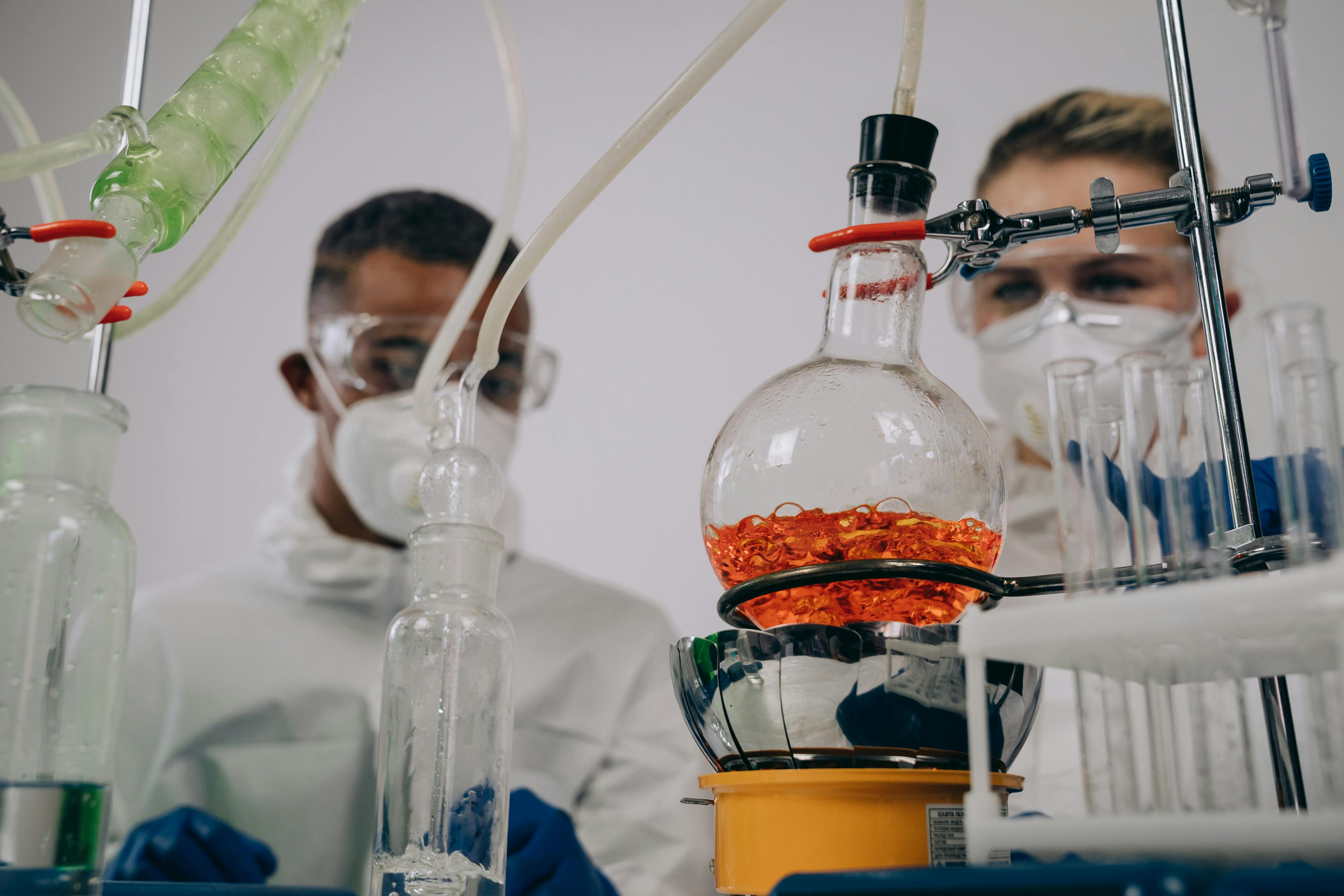Distilling nitric acid is a process that can be used to purify the acid. It involves separating the components of the acid through boiling and condensation. This article will explain the steps required to distill nitric acid, including safety precautions and equipment needed.Nitric acid is a highly corrosive and toxic inorganic acid. It is a colorless liquid with a sharp, irritating odor. Nitric acid has the chemical formula HNO3 and is composed of hydrogen, nitrogen, and oxygen. It is used in the production of fertilizers, explosives, and other chemical compounds. It can also be used in laboratory settings for various experiments.
Hazards of Distilling Nitric Acid
Nitric acid is a highly corrosive and toxic chemical, so great care must be taken when distilling it. The fumes that are produced when nitric acid is distilled can be extremely hazardous to the health of anyone nearby. Additionally, contact with the skin or eyes can cause severe irritation and burning. Inhalation of the fumes can cause serious respiratory problems and even death in some cases. Even brief exposure to nitric acid can cause long-term lung damage.
The equipment used to distill nitric acid must also be taken into consideration. If not properly maintained, it can corrode and leak dangerous fumes, leading to potential exposure to hazardous vapors or ingestion of contaminated water or food products. Any potential spills should be quickly contained and neutralized with an appropriate neutralizing agent such as sodium bicarbonate.
It is important to take all necessary safety precautions when working with nitric acid, including wearing protective clothing and using proper ventilation systems. Additionally, all containers used for storing nitric acid should be labeled properly, and employees handling the chemical should receive appropriate training
Prepare for Distilling Nitric Acid
Before attempting to distill nitric acid, it is important to take all necessary precautions to ensure safety. The first step is to wear protective clothing such as safety glasses, gloves, and a lab coat. Additionally, it is recommended that the area where the distillation is taking place be well ventilated. After these safety precautions have been taken, the next step is to properly prepare the materials needed for the distillation process.
The materials needed for the distillation of nitric acid include a clean 500-milliliter round bottom flask, a two-holed cork stopper with a thermometer in one hole and a glass tube in the other hole, an aspirator with a water source, and a condenser. The flask should be clean and dry before beginning the process. Once these materials are gathered, they should be connected together using clamps or rubber tubing in order to ensure that they are securely held together.
Next, nitrogen dioxide gas must be produced in order to create nitric acid. This can be done by heating copper(II) oxide and concentrated sulfuric acid on an
What Equipment is Needed for Distilling Nitric Acid?
Distilling nitric acid requires specialized equipment. This includes a distillation flask, condenser, receiver, and thermometer. The distillation flask is the container in which the nitric acid is heated and vaporized. The condenser cools the vaporized acid so it can return to its liquid state. The receiver catches the condensed liquid and contains it until it’s ready to be used. The thermometer measures the temperature of the distillation process, ensuring that it doesn’t become too hot and cause an explosion or fire. Additionally, a heating source (such as a Bunsen burner) is required to provide enough heat for the process. All of these pieces of equipment are necessary for safely and effectively distilling nitric acid.
It’s also important to take proper safety precautions when working with nitric acid, such as wearing protective clothing and eye protection. Additionally, make sure that all equipment being used is properly rated for use with nitric acid so that it doesn’t corrode or break down during the process. Finally, have a fire extinguisher nearby in case of an accidental fire
Introduction
Distilling nitric acid is a process that requires the use of special laboratory equipment and extreme caution. It involves the distillation of nitric acid from a mixture of sulfuric acid and nitric acid, and is used to produce highly concentrated nitric acid. This guide will take you through the steps required to distill nitric acid in your laboratory.
Step 1: Gather Your Materials
Before beginning to distill nitric acid, it is important to gather all the necessary materials. You will need sulfuric acid, nitric acid, a 250-ml round-bottomed flask, a heating mantle, a condenser, an adapter for the condenser, and an aspirator tube. It is also important to have safety goggles, gloves, and protective clothing when working with these chemicals.
Step 2: Prepare the Mixture
Once you have gathered all of your materials, you can begin preparing the mixture for distillation. This involves combining 100 ml of sulfuric acid with

Monitoring and Controlling the Process of Distilling Nitric Acid
Distilling nitric acid is a complex process that must be closely monitored and controlled to ensure the safety of personnel, equipment, and the environment. The process involves several steps which must be performed in a specific order. The distillation process begins with pre-treatment of raw materials such as sulfuric acid and ammonium nitrate. These materials are then heated in an apparatus known as a still to produce nitric acid. A number of parameters must be controlled throughout the process to ensure optimal results and safety.
The first step in monitoring and controlling the process is to measure the temperature of the apparatus. This is important because if the temperature is too high, there is a risk of an explosion or fire due to the high pressure inside the still. Additionally, if the temperature is too low, there will not be enough heat transfer between the raw materials and the still, resulting in poor distillation results.
The second step is to monitor and control any impurities present in the raw materials or in the resulting nitric acid product. Impurities can affect both safety and product quality,
Precautions to Take When Distilling Nitric Acid
When distilling nitric acid, it is important to take precautions in order to protect yourself and your surroundings from any potential hazards. The most important precaution is to wear proper protective clothing such as a lab coat, goggles, and gloves. It is also important to ensure that the area in which you are distilling the acid is well-ventilated. Additionally, it is important to use only glassware or other materials that are compatible with nitric acid when distilling it.
It is also essential to use the correct concentration of nitric acid when distilling it. Too much or too little can lead to an explosion or other dangerous situation. Additionally, it is important not to exceed the recommended temperature for distillation. Exceeding the recommended temperature can lead to a dangerous reaction. Finally, it is essential that all components of the distillation apparatus are sealed properly before beginning the process. Any leakage of nitric acid could lead to a hazardous situation.
In conclusion, when distilling nitric acid, it is essential that proper precautions are taken in order to protect oneself and one
Disposal of Waste from Distilling Nitric Acid
Nitric acid is a strong acid that is commonly used in industrial settings. It is also used in some laboratories for a variety of purposes. When nitric acid is distilled, it can produce a range of byproducts and waste products that need to be disposed of properly. Knowing how to dispose of these wastes safely and responsibly is important for protecting the environment and the health of those who may come in contact with them.
The first step in disposing of waste from distilling nitric acid is to separate it into two categories: solid waste and liquid waste. Solid waste includes any materials that are left over from the distillation process, such as filter paper, glassware, or containers. These should be placed into appropriate hazardous waste containers and taken to an authorized disposal facility. Liquid waste contains any liquids that are left over after the distillation process, such as nitric acid itself or its byproducts.
Liquid wastes must be neutralized before they can be disposed of safely. This can be done using a simple chemical reaction involving sodium bicarbonate or calcium carbonate, which will neutralize the nitric acid

Conclusion
The process of distilling nitric acid is a tricky one. It requires patience and precision to complete the task correctly. To ensure that the process is successful, it is essential to properly select the materials, use a reliable still, and maintain a safe working environment. With the right tools and conditions, distilling nitric acid can be done successfully.
It is important to remember that nitric acid is a corrosive substance and should always be handled with caution. It should never come into contact with skin or eyes and must always be stored in an appropriate container. Additionally, safety equipment such as gloves and goggles should be used when working with nitric acid.
In conclusion, distilling nitric acid can be a complex process but it can also be done safely and successfully with the correct tools and precautions in place. Careful selection of materials, use of an appropriate still, and maintaining a safe environment are key to ensuring that the process goes smoothly.

